Poveglia: the mysterious island in the Venice lagoon
Hidden in the waters of the Venetian lagoon, a few kilometres from San Marco, there is an island shrouded in mystery and legends: Poveglia.
This small strip of land, with its troubled history and eerie atmosphere, has become a symbol of intrigue and wonder for many.
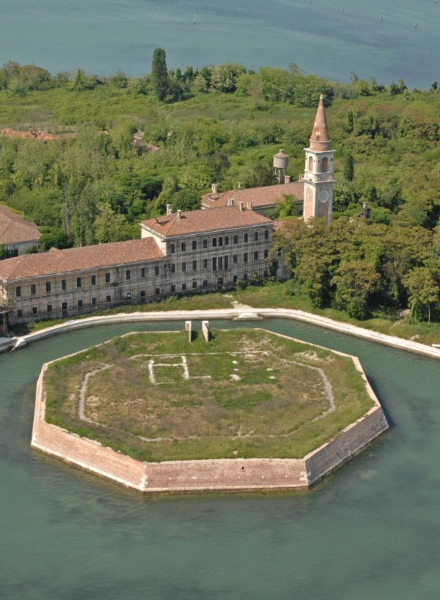
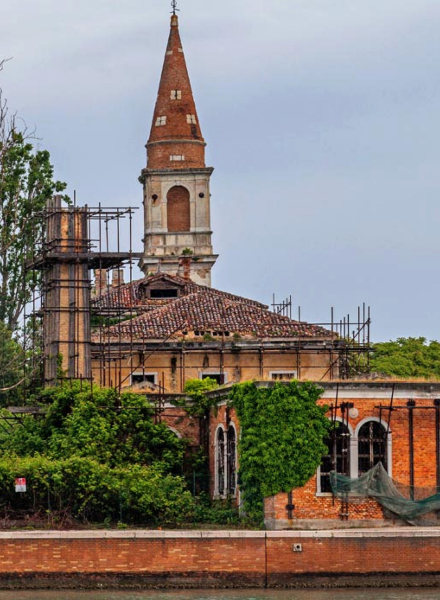
The origins
First inhabited by the Romans, the island of Poveglia became a refuge during the barbarian invasions, offering protection to fleeing populations. Over the centuries, however, Poveglia developed into a flourishing commercial and agricultural centre, taking advantage of its strategic position in the heart of the Venetian lagoon. Its privileged location allowed it to prosper, becoming an important hub for trade and economic activities in the area.
The Plague Period
One of the darkest and most dramatic chapters of Poveglia’s history dates back to the period of the great plague that scourged Europe in the 14th century. In those dreadful times, the island was turned into a lazaret, a place of isolation where plague victims were confined to prevent the spread of the contagion. Thousands of people died here and the island became a place of suffering and desperation.
According to popular belief, the tormented souls of those who perished on the island still haunt its spaces today, contributing to its reputation as a cursed place.
The Psychiatric Hospital
Another important period in Poveglia’s history began in 1922, when a psychiatric hospital was opened on the island. The conditions inside the facility were notoriously harsh, and over time creepy stories of medical experiments on patients began to circulate. These rumours, fuelled by the mystery surrounding the island, contributed to its sinister reputation.
The hospital remained in operation until 1968, when it was finally closed. However, stories of ghosts and paranormal activity linked to this period survive today and the myth of Poveglia as a haunted and cursed place is still alive.
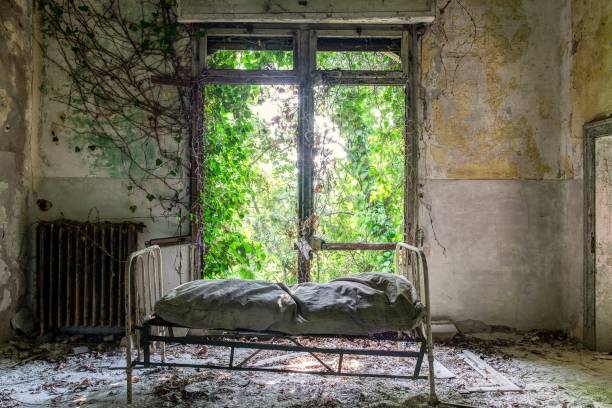
Legends and mysteries
Poveglia’s troubled past has given rise to many legends and tales that still fascinate and frighten the listeners.
Here are some of the most famous:
- The mad doctor
A truly eerie legend tells of a psychiatric doctor of the hospital who carried out experiments on patients. It is said that he went mad and threw himself off the island’s bell tower, but that a mysterious mist saved him from death. Also according to legend, his spirit still haunts the island, stalking anyone who enters its abandoned buildings.
- The ghosts of children
Some stories tell of ghostly presences of children playing and laughing on the island, probably victims of the plague centuries ago. Their calls and laughter would be heard on full moon nights, creating a surreal and eerie atmosphere.
- Cursed land
A widely held belief holds that the island is cursed and that anyone who visits it is doomed to a sad fate. This superstition has kept Poveglia almost uninhabited over the years and discouraged the most superstitious visitors.
Over time, however, the line between reality and legend has become increasingly blurred.
In 2009, for example, the popular American television series Ghost Adventures contributed to this halo of mystery: the crew, after a night spent on the island, claimed to have had paranormal experiences, thus adding a new chapter to the already rich repertoire of spooky stories. However, when analysing historical sources, many of the most sensational events are not confirmed.
Indeed, the true history of the island, despite its undeniable drama, probably tells a different truth from the one handed down to the present day.
The ecosystem of Poveglia
Despite its tumultuous history and creepy fame, Poveglia hides a surprisingly positive aspect: a lush and mostly unspoilt ecosystem. The absence of urban development and mass tourism has allowed nature to flourish freely, creating a unique environment in the Venetian lagoon.
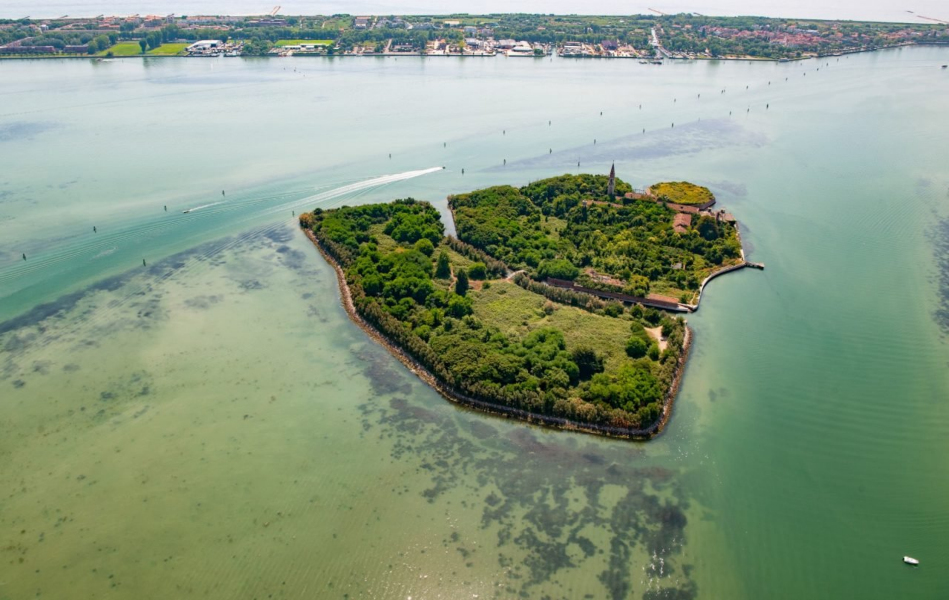
Flora and fauna
The flora on the island consists mainly of local plants typical of the Venetian lagoon. The lush vegetation includes maritime pines, poplars and a variety of shrubs that cover the landscape, enveloping the historic ruins in a green embrace. This contrast between wild nature and decadent architecture creates a surreal and fascinating atmosphere, where time seems to stand still.
The island has also become a precious refuge for a variety of animal species, especially birdlife. Seagulls, herons and other birds find the surrounding waters and woods of Poveglia the ideal place to nest and rest. The tranquillity of the island, far from the hustle and bustle of nearby Venice, offers these creatures a natural sanctuary of inestimable value.
Unfortunately, like many areas of the Venetian lagoon, Poveglia is not immune to contemporary environmental challenges. Rising sea levels, coastal erosion and pollution are real threats for the island and its delicate ecosystem.
For this reason, the preservation of this unique environment needs a joint commitment and careful management to protect its natural resources for future generations.
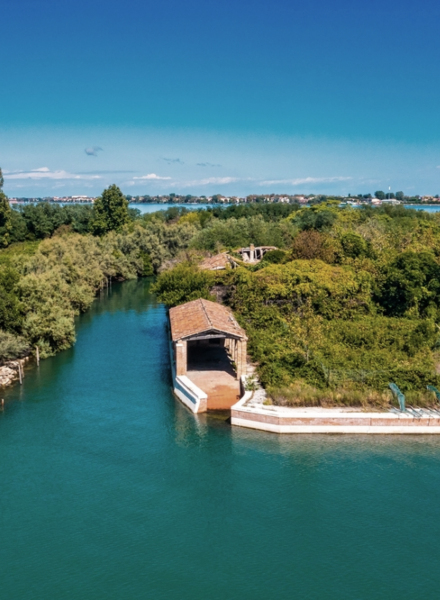
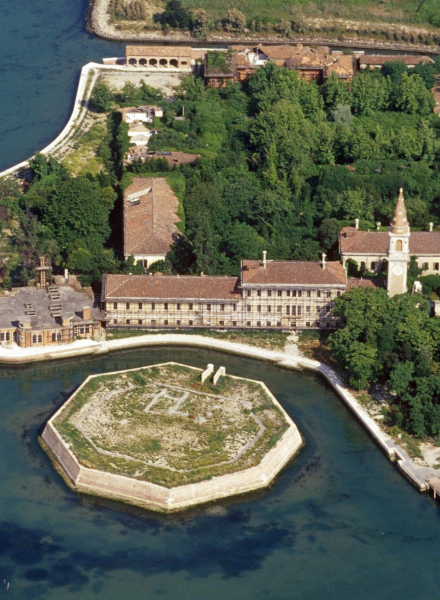
Tourism
Despite its charm, Poveglia is officially closed to visitors.
The island is owned by the Italian state and access is not permitted, mainly for security reasons. This is because the abandoned, crumbling buildings could be a danger to visitors. In fact, warning signs indicate that landing on the island is prohibited, discouraging unauthorized exploration.
Occasionally, special permits are granted for guided tours or research purposes, but these are rare and difficult to obtain. The restricted access has contributed to keeping the mystery of Poveglia and its legends alive.
A stone’s throw from Ca’Savio
For those wishing to explore the Venetian lagoon, Camping Ca’Savio is the right place to start. Located on the beautiful Cavallino peninsula, just a few kilometres from Venice, the campsite allows you to enjoy the beauty of the lagoon in a welcoming and eco-friendly environment. From here, you can discover the lagoon’s best-loved islands by taking part in boat trips and catching a glimpse, albeit from a distance, of the enigmatic silhouette of Poveglia, imagining its stories and secrets.
Poveglia is still an enigma, a place suspended between history and legend. Its silent presence in the lagoon continues to inspire those who observe it from afar, reminding us that sometimes the most fascinating mysteries are those that remain unsolved, guarded by time and the waters of the Venetian lagoon.

